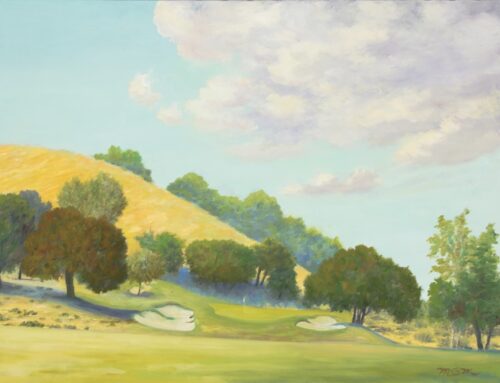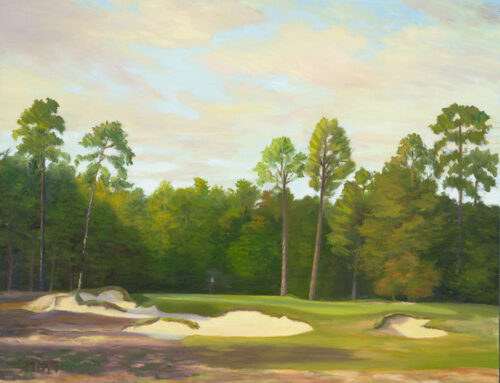A Renaissance Movement in Golf Architecture
by Tom Paul
Most of us who read or write on the golf architecture websites enjoy the game immensely, we are fascinated by different and unique holes and courses and the creative architects who produced them. Many are specifically interested in the classic courses Europe, Australia etc. and others the era in America spanning from just prior to the turn of the century to around the mid 1930s.
As most know, the industry of golf architecture was slowed precipitously after the stock market crash of 1929 and really wasn’t revived until post WW2. Many feel the direction of architecture for the ensuing fifty years wandered off in a relatively uninspired direction.
At the turn of the 20th century and the millennium there seems to be a reawakening of appreciation for the so called ‘Golden Age’ era, the classic courses that were produced in that era and the dozen or so architects who produced them and took the game to higher, more artistic, imaginative and interesting levels.
Today we have a handful of architects who have spent a considerable amount of time concentrating on producing new courses that incorporate the features, concepts and playabilities of the ‘Golden Age’ classic designs. A smaller group have dedicating themselves to restoring these classics that to a large degree have been improperly maintained or just plain corrupted in the latter half of the 20th century. Still other concerned members and superintendents are fighting a tough battle to get their courses to the conditioning and playabilities they were designed for.
In my opinion, whether this appreciation and interest is a renaissance or a new direction, this burgeoning movement needs organization to prosper and return to the mainstream of golf.
Most of us on this site are familiar with the validity and the inherent strengths of classical courses. Their offerings, so much more than others, include naturalness, solid routings due to routing priority on the available land, exciting and clever options for lines of play, generally hard and fast albeit seasonal turf, a more open use of shot angles and recovery potential and minimal use of trees to enhance the foregoing, as well as the strategic demands of the unfettered wind. The sum of the element listed above produced, in almost all cases, golf courses that offered an extraordinary principle that in the final analysis may be their most enduring strength; they accommodated and were designed to accommodate every level of player.
The previously mentioned span from the late 1940s to approximately the 1990s, when architecture wandered off in another direction, left many of these classic courses vulnerable to change, poor maintenance vis-Ã -vis their intended designs and ultimately to a point where they became under-appreciated or simply misunderstood.
This wide-spread misunderstanding has led to many of these classic courses being slowed up by lush and soft turf, thereby obsoleting many of their features; to being treed up, blocking many of their intended recovery angles, to green speeds increased to the point their unique contours are useless and to being renovated in such a way as to corrupt or destroy their unique features and elements and thereby their overall design. The analogous clichés of ‘putting modern legs on a beautiful piece of antique furniture’ or ‘putting chrome on a classic automobile’ are accurate.
For these reasons I propose the formation of a ‘renaissance movement’, an organized movement to serve as a source of education and understanding of proper maintenance practices and restoration practices for the classic and strategic courses. Hopefully this education and understanding will lead more quickly to a greater appreciation by many more golfers of the look, the strategies and the playabilities of classical and strategic golf.
I propose that like-minded designers, superintendents, agronomists, writers, course and club committeemen, golf professionals and those interested in such a ‘movement’ sign on and agree to collaborate in an effort to educate those that need and want information and education. I propose that GCA or a vehicle like it be used as the location for this information. I propose GCA, at the moment, simply because it’s the site I’m used to and one that has many knowledgeable people already contributing and collaborating. Those knowledgeable contributors in the golf business and others should list their names, phone numbers, email addresses and mailing addresses. Some in the business are extremely busy and may want only their mailing addresses on file. Whether or not GCA would have to reformat somehow to accommodate this effort for archiving and more accessible informational availability I’m not sure as I know little about the construction and economics of web-sites or the Internet. If something in the nature of grant or funding is necessary, let’s look into that.
I can almost guarantee that an organized ‘movement’ properly constructed and managed can have a very beneficial influence on maintenance, restoration and construction of classic, strategic design. I expect the greatest initial benefit will be in maintenance, the heretofore thankless area of the Superintendent. This will make available to the superintendent an avenue to direct and educate those who make unrealistic demands on or unwarranted criticisms of his procedures and practices. Next should be the ease of proper and sympathetic restoration, where even well intentioned green committees make glaring mistakes to the overall design principles of their courses. The construction end should follow eventually resulting in the widespread understanding of his style of architecture that has been oddly lost in the duration of a fifty year hiatus.
This kind of movement clearly might not pertain to all of golf or golf architecture. There are plenty of others who will always like the things we don’t and vice versa. So be it; golf can and will always accommodate all kinds of architecture and there’s nothing wrong with that.
I truly hope this can happen, so for what it’s worth, that’s my opinion.
The End





